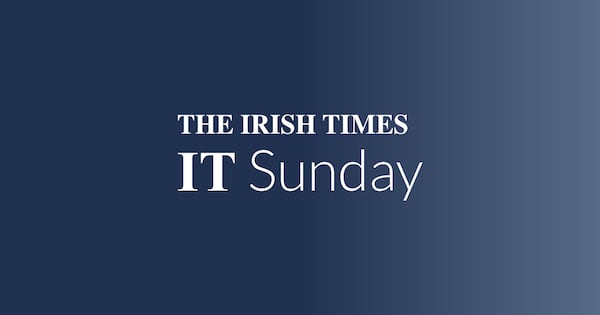There are some images so stark, so emotionally overwhelming, that they bypass the analytical parts of our brains and land directly in the gut. One of the most memorable examples remains the 1972 photograph of nine-year-old Phan Thi Kim Phuc running naked down a road in South Vietnam, her body scorched by napalm.
That picture helped shift public opinion on the Vietnam War. Its power lay not in what it said, but in what it made impossible to ignore.
In late July, a photograph from Gaza began circulating that appeared to carry the same moral charge. Shot by Ahmed al-Arini for the Turkish Anadolu Agency and distributed globally by Getty Images, the image shows 18-month-old Muhammad Zakariya Ayyoub al-Matouq, his back to the camera, his tiny body skeletal and frail.
He is being held by his mother in a bare tent described by the photographer as resembling a tomb. His only clothing is a black plastic bin liner fashioned into a makeshift nappy.
Election Daily podcast: Poll leaves Humphreys in need of ‘unprecedented turnaround’
Election Daily podcast: Is Heather Humphreys playing it too safe?
Presidential debate: who came out on top and who struggled?
Brian Cowen and The Crash: a new look at the handling and political cost of the Celtic Tiger collapse
Al-Arini told the BBC that he took the photo to show “the extreme hunger that babies and children are suffering from in the Gaza Strip”. It was widely republished – on the front pages of international newspapers, across social media platforms, and prominently on the front of The Irish Times.
But within days, the image had become a new front in the information war surrounding Gaza. David Collier, a London-based independent journalist with a long association with Israel, posted a series of claims on social media challenging the photo’s context.
Citing a medical report issued in Gaza in May, he said the child had been born with a serious genetic condition, suffered from cerebral palsy and had been diagnosed with hypoxaemia, a condition involving low oxygen in the blood. He also pointed to other photos of the boy with his mother and brother, who, Collier argued, appeared “healthy and fed”.
This pushback forced a response. The New York Times, which had used the photograph in a feature on Gaza’s most vulnerable civilians, added a clarification: “We have since learned new information, including from the hospital that treated him and his medical records, and have updated our story to add context about his pre-existing health problems.”
The inevitable followed: accusation, counteraccusation, outrage. Writing from Jerusalem for The Irish Times, Mark Weiss reported an Israeli government spokesperson’s reaction to the photo, calling it a “blood libel” – a reference to an age-old anti-Semitic trope.
The history of war photography is also the history of contested truth. In 1992, during the Bosnian war, British journalists filmed and photographed emaciated men behind barbed wire at the Trnopolje camp, prompting comparisons to Nazi concentration camps. Those images were also subjected to intense scrutiny.
Pro-Serb commentators argued that the footage had been manipulated – that the wire fence enclosed the journalists, not the prisoners. It didn’t matter that those claims didn’t hold up to much scrutiny. The damage was in the doubt.
That dynamic is playing out again. The photograph of Muhammad al-Matouq landed at a moment when international concern about starvation in Gaza is mounting. Israel’s allies, including the United States, are under pressure to increase aid and demand accountability.
Effie Defrin, a commanding officer and spokesman for the Israel Defense Forces, conducted a press tour in a small section of Gaza some days after the photograph appeared. He described the imagery emerging from the territory as “heartbreaking” but insisted that most of it was staged. “It’s fake,” he said. “Fake distributed by Hamas. It’s a campaign.”
The Israeli government has taken the same line. But the World Health Organisation has recorded 74 deaths related to malnutrition in Gaza so far this year. Of those, 63 occurred in July, and 25 were children.
Speaking during his visit to Scotland last week, Donald Trump contradicted the Israeli narrative. “That’s real starvation,” he told reporters. “I see it, and you can’t fake that.”
There are several things happening at once here. On one level, this is a debate about the credibility of a single image. On another, it is a struggle over narrative: who gets to define reality, whose suffering is deemed authentic, and how much weight is given to context when the picture already tells a story.
News photographs are, by nature, selective. A still image cannot account for pre-existing conditions or political implications. It doesn’t differentiate between tragedy and strategy. But nor can it be easily unseen. Whether or not Muhammad al-Matouq’s condition is entirely attributable to starvation, the image of his skeletal frame resonates precisely because it aligns with what many already believe to be true: that Gaza, after 21 months of war, a collapsed humanitarian infrastructure and a blockade on aid, is teetering on the brink of famine.
Media organisations are often caught in the middle. The impulse to publish powerful images is strong. The imperative to contextualise them is equally important, particularly when the backlash can be fierce and immediate. The risk is not just reputational, but moral. In the effort to tell the truth, you can end up distorting it. In the effort to avoid distortion, you can end up saying nothing at all.
Perhaps that is the real challenge posed by the Gaza image. Not whether it is true in the narrow, clinical sense, but whether it is representative of a larger, brutal truth. In the end, the photograph’s power doesn’t lie in its ability to persuade everyone. It lies in its refusal to let us look away.


















